Making New Traditions
The Supreme Court decision to legalize same-sex marriage in June caused an almost immediate bump in share prices for public jewelry companies (Signet, Tiffany, and Blue Nile), as investors viewed the ruling a boon for business.
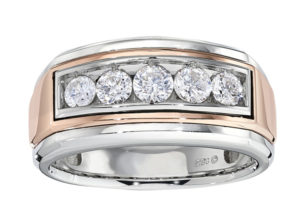 With an estimated $884 billion in disposable income, the LGBT (lesbian, gay, bisexual, and transgender) community is a huge market for retail jewelers to target, presenting significant opportunity to grow their bridal business.
With an estimated $884 billion in disposable income, the LGBT (lesbian, gay, bisexual, and transgender) community is a huge market for retail jewelers to target, presenting significant opportunity to grow their bridal business.
Out Now Consulting, a marketing agency specializing in gay and lesbian consumers, estimates that within a year of legalization, same-sex marriage will generate over $1 billion of new matrimonial spending in the U.S.
In the first three years of nationwide marriage equality, spending on same-sex weddings could result in a $2.5 billion boost, according to a report from the UCLA School of Law’s Williams Institute.
Different Dynamics
While there may not be much difference in the products same sex couples choose versus their straight counterparts, the dynamics are different for two people of the same sex.
“History has only known one scenario for generations: A man buys a diamond for a woman and proposes to her; the woman wears the diamond ring; and at the wedding, both get matching bands. But today’s modern family has many faces, and LGBT protocols are still in their infancy,” says New York designer Rony Tennenbaum, partner with EMA Jewelry. He trains jewelers and conducts workshops in the LGBT community about new wedding traditions, and was a panelist on the Plumb Club webinar, “A Jewelers Guide to Sam Sex Wedding Couples & Creating an Inclusive Shopping Experience.”
Bernadette Smith of 14Stories and the Gay Wedding Institute in New York, also a Plumb Club webinar panelist, reminds that there are differences between straight and gay weddings, most of which involve a lack of tradition, especially among gay men. She cites that female same-sex couples are far more likely to follow traditional wedding protocols than gay men.
Among the most frequently asked questions Tennenbaum gets from LGBT couples: Do we get matching rings? Do we get engaged? Who 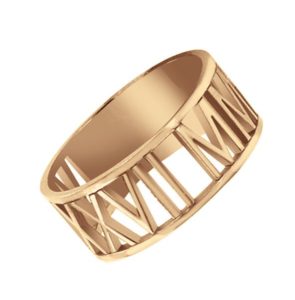 proposes to who? Does it have to be diamonds? Does it have to be rings? “They know anything goes, but they’re looking to jewelers to help them navigate this new journey.”
proposes to who? Does it have to be diamonds? Does it have to be rings? “They know anything goes, but they’re looking to jewelers to help them navigate this new journey.”
Tennenbaum says in his experience, 25% of same sex couples get matching bands and about 5% exchange jewelry other than rings. As for him, he’s a hopeless romantic and advocates diamond rings for the perfect forever symbol. He says one ring often serves for both engagement and wedding, and marketing individuality within couple-hood is key.
Also, there’s no such thing as gay rings, says Tennanbaum. Commitment rings, union rings, rainbow rings, alternative metals, and lower prices were promoted to this demographic. But new traditions are evolving for engagement and wedding rings, upgrading or renewing vows, in gold and platinum at higher price points.
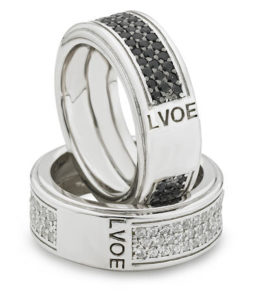 According to the Gay Wedding Institute, 66% of women purchase engagement rings, and 19% of men—a percentage Tennenbaum expects will rise with greater marketing and merchandise selection for men’s diamond rings.
According to the Gay Wedding Institute, 66% of women purchase engagement rings, and 19% of men—a percentage Tennenbaum expects will rise with greater marketing and merchandise selection for men’s diamond rings.
Presently, the men’s ring category is woefully lacking in options, says Matthew Perosi-Doughty, Jewelers Equality Alliance, helping jewelers create inclusive shopping experiences for same-sex couples, and Plumb Club webinar panelist. “There are no men’s engagement ring options,” noting his own difficulty in finding rings with his husband. “There are plenty of rings for women, but little selection for men. Jewelers asked why they would carry that, no one would buy it.”
Jonathan Goodman Cohen, for the men’s jewelry manufacturer IB Goodman, Newport, Kentucky, cites sales up in gold and diamond bands. “We’re doing a very good business in men’s diamond rings, with demand growing at higher price points and greater total carat weights—up from ¼ to ½ to ½-1 carat.” Besides white diamonds, men like black and brown diamonds, and other gems including sapphire, garnet, and onyx.
There’s tremendous opportunity for the industry to increase sales of engagement rings and bands to the LBGT community, advocates Crystal Oyler Slagle, marketing coordinator for Fantasy Diamond/Alison & Ivy, Chicago. Next to classic styling and rings with bling, she notes that Alison & Ivy’s Roman Numeral collection has become a popular engagement ring design no matter the couple.
Update Language
To be same sex wedding competent, take a vocabulary inventory and update your language. “As an industry, the first thing we have to do is to change our use of the word ‘bridal’ to ‘wedding’ or ‘relationship’ jewelry,” advocates Kevin Reilly, vice president of the Platinum Guild International USA.
Language matters, says Smith, “Be Inclusive in all of your material, in store, in print, and online. Instead of bride and groom consider: brides and grooms, couples, sweethearts, newlyweds, spouses, partners, wedding couple.”
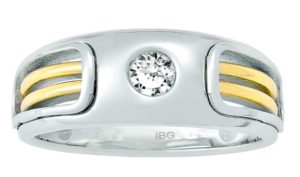
Becoming inclusive means asking the right questions, with the right language says Perosi-Doughty. “What’s the first question you ask when a man says he’s there to buy an engagement ring? Don’t assume anything. ‘Congratulations! Tell me about the lucky person.’ Let the customer provide proper names and appropriate pronouns.” He advises jewelers ensure employees are in agreement.
It’s important to let consumers know that LGBT couples are welcome, advocates Reilly, noting that straight couples check out an average of 20 websites before landing on one they like for rings. He expects that number must be greater for same sex couples trying to find businesses that are visibly inclusive.
Perosi-Doughty emphasizes that advertising creates influence, and inclusive ads educate. “Typical ads hold couples to hetero-normative standards; ads to attract men have been lacking, and not just to gay men; and current advertising has a limited view on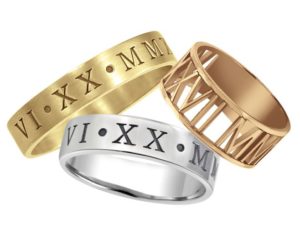 how to solicit women buyers.”
how to solicit women buyers.”
Tiffany came out with its first gay engagement ad in January 2015 and other jewelers have followed, meeting some backlash from customers. Perosi-Doughty says jewelers have to weigh what is important to them. But he notes that 6 in 10 consumers agree “brands that show same-sex couples in ads are being appropriately inclusive,” says a 2014 survey by JWT for BuzzFeed.







